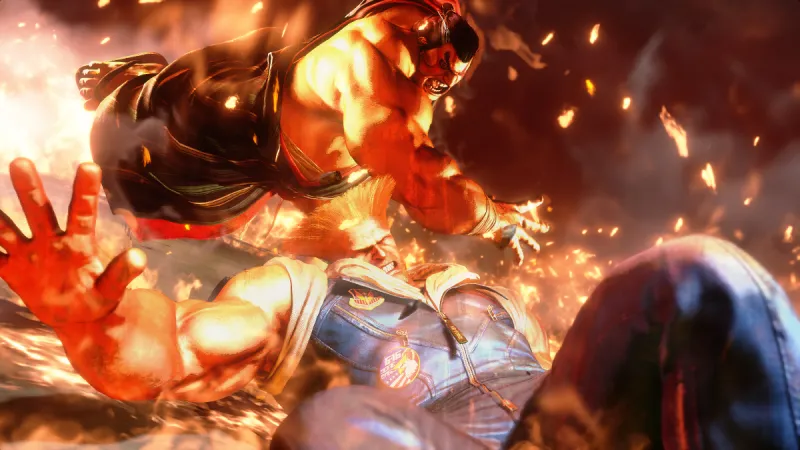

Our extra-large special edition is here. Subscribe today and receive the 25% longer issue at no extra cost!

Each mainline entry of the Street Fighter series is an important milestone in the fighting game genre. Though every numbered entry received critical acclaim, Street Fighter V sticks out among fans as the outlier of the series; the game experienced perhaps the most tumultuous launch of any Street Fighter game to date. But out of that trouble emerged something great. Thanks to the team’s persistence, post-launch roadmap, and an injection of new blood into the project's leadership, Street Fighter V drastically improved its core gameplay, online play, content offerings, and more throughout its six-year lifespan.
With the benefit of those lessons learned, many team members that righted the ship are back to develop Street Fighter 6. The latest entry delivers myriad improvements, new features, and a sleek new aesthetic while simultaneously acknowledging and paying homage to each entry before it. Street Fighter 6 feels like yet another evolution of the fighting game genre ushered in by the franchise that pioneered it in the first place.

We’ve already spent hours playing Street Fighter 6 thanks to an October closed beta test and several summer trade expos like Summer Game Fest and Tokyo Game Show, but we wanted to learn more. We traveled to Capcom’s headquarters in Osaka, Japan, to get more hands-on time and learn the inside story about Street Fighter 6 from the passionate team making it.
In 2018, Capcom began thinking about what it wanted to do for the next Street Fighter. DLC plans on Street Fighter V were cut short, but the title was experiencing a resurgence thanks to its post-launch updates and fixes. Two of the prominent figureheads of that turnaround, director Takayuki Nakayama and producer Shuhei Matsumoto, were placed in those same roles for Street Fighter 6.
With much of the old guard, including Street Fighter V figurehead Yoshinori Ono, no longer involved in the franchise, the series was at a crossroads. Just as the shift in Street Fighter V upended Capcom’s fighting game development team, Street Fighter 6 ushers in an entirely new era for the franchise. Nakayama and Matsumoto brought sorely needed fresh perspectives to the table, energizing the development team in the process.
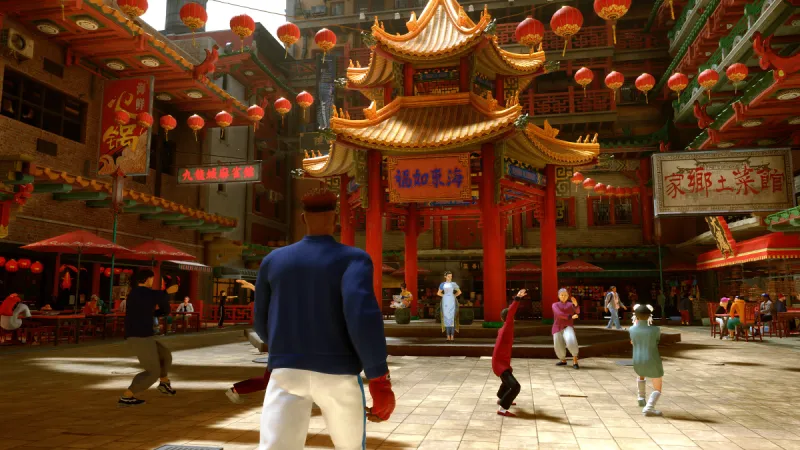
The Street Fighter team decided to build on those successes from V while learning from every other game before it. The comparisons to Street Fighter III, with its parrying system, Street Fighter V, with its modern style of fighting, and Street Fighter Alpha, with its multi-tiered super gauges, are evident for longtime fans. But it’s the most iconic entry in the series that inspired the team the most.
“The concept I received from Nakayama-san was that we wanted to take it back to almost what it was during the Street Fighter II era,” says producer Kazuhiro Tsuchiya, who has been with Capcom for more than three decades. “We wanted to make another Street Fighter game that’s not just for existing fans of the series, but for everyone and get that same feeling where all types of gamers are falling in love with fighting games … with Street Fighter. When that concept was brought up by Nakayama-san, it resonated very strongly with me. It is a challenge, but it’s a challenge worth taking.”
Street Fighter 6 takes cues from those past games but ups the ante by adding several new modes and features on top of the terrific 2D fighting the series is known for – a tall ask from the relatively less-experienced team. “It took time for us to convince certain people – decision-makers – outside of the team to explain why these new features are so necessary,” Nakayama says. “We are trying to accomplish a lot in comparison to other fighting games, but we want Street Fighter 6 to be important and maybe a gateway for a lot of people to get themselves involved and excited about a fighting game.”
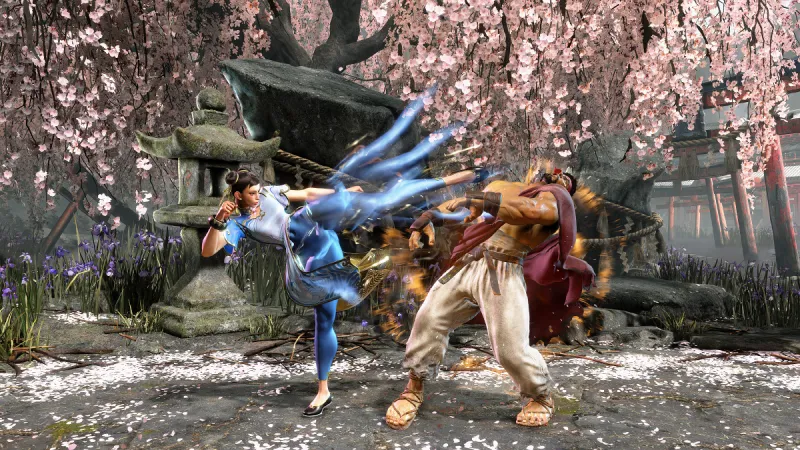
Tsuchiya used his veteran savvy to give the team the wide berth needed to deliver on this vision. He began advocating and fighting for the core development team to prevent the unrealistic deadlines and release expectations of past games. According to Tsuchiya, he’s successfully prevented a repeat of V’s launch.
“It’s very rare to see games come to fruition where they were able to deliver everything the team was aiming for,” Tsuchiya says. “There’s always some sort of compromise that had to be made or ideas that had to be scrapped due to budget, schedule, resource issues. But for this time around, regarding the fundamental things that Nakayama-san wanted to accomplish with his dream project, it seems like we haven’t really had to make any sorts of omissions or compromises for this title.”
Thanks to the backing of Capcom leadership, the Street Fighter 6 development team has been able to capitalize and create something it feels is extraordinary, even in the context of one of the most beloved series in video games. With a new era of developers ready to usher in a new generation of Street Fighter, the sixth mainline entry gives fans something that feels like a 360-degree view of the franchise – something that pulls from those previous games while also giving players something wholly fresh and modern. Street Fighter 6 is ambitious, but through strong gameplay and a seemingly realized vision, it’s poised to deliver on those promises.
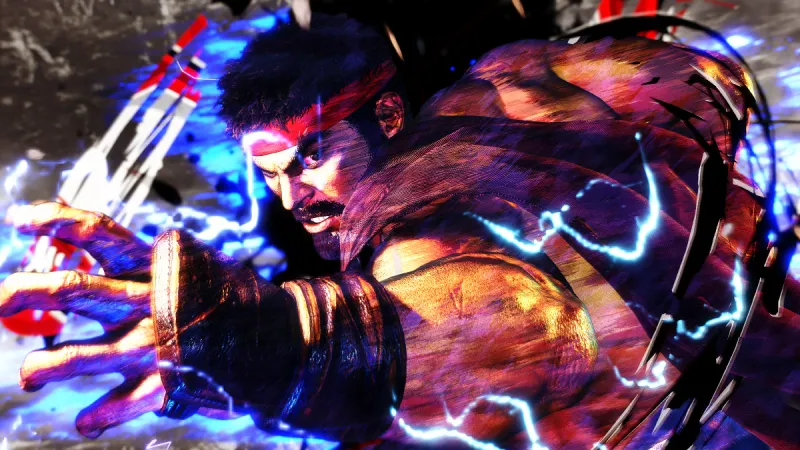
Street Fighter 6 pulls from individual entries of the series to create its fighting style, but at its core, the gameplay feels like a culmination of the series to this point. Players still have access to the light, medium, and heavy attacks of past games, as well as throws and special moves that require specific inputs to pull off; throwing a Hadoken or Shoryuken feels as good as it did in the ’90s. On top of those core mechanics, Street Fighter 6 adds a new Drive system, which operates on a meter featuring six segments.
This Drive meter is similar to a stamina system, as each Drive move you pull off depletes segments of your constantly recharging supply. In addition to preventing players from spamming the powerful Drive moves and requiring them to think strategically, this also lets fights get off to an action-packed start since you begin with your six bars fully charged.
“In comparison with Street Fighter V, the intention with the V-Trigger system was we wanted to have strong options towards the latter half of the match,” Nakayama says. “We wanted to go a different route for 6, having all that excitement and freedom from the very beginning of the fight.”
Since these Drive bars allow access to different styles of moves, it plays into one of the development team’s main goals: giving players the freedom to play how they want. Players can use each of those meter segments as they need. For example, the defensive Drive Parry lets you deflect incoming attacks if timed right. At the same time, Drive Rush enables you to run forward out of an attack or parry for more combo opportunities. Meanwhile, those who want to go on the offensive can activate Drive Impact, which explodes with a splash of paint and can continue through an opponent’s attack. The suite rounds out with Overdrives, powerful variants of special moves like EX moves in past games.
Even with minimal Drive System experience, I used it to great effect. Though Drive Parry feels like it will have the widest utility in disrupting my opponents’ attack flow, the highlights of my matches involved pulling off powerful Overdrive moves just as my opponent thought they were getting the upper hand. With how effective this system was for me in the short time I experimented with it, I can’t wait to fully explore just how impactful it is once I come closer to mastering its intricacies.
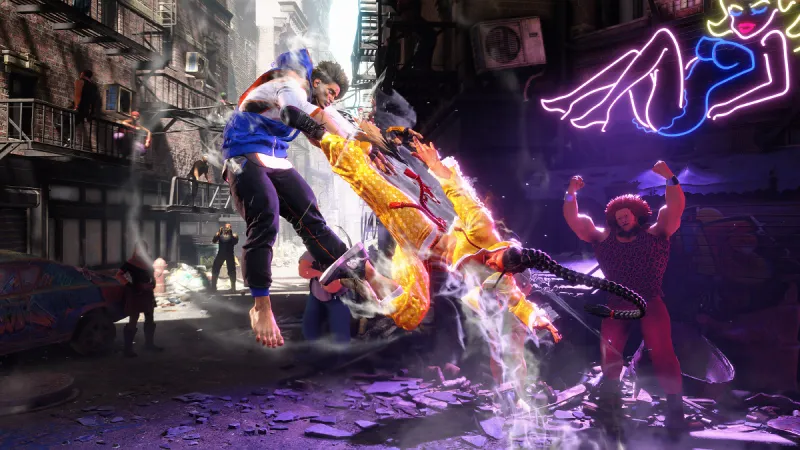
“One of the things we felt that was important to do was to make the actual moves associated with this system relatively easy to perform,” Nakayama says. “That’s something we prioritized. It’s a deep and complex system but relatively simple in execution.”
Stacked on top of the Drive mechanic is the return of Super Arts. These moves, which debuted in Street Fighter III, pull additional influence from the Alpha series’ combo system. Each character has three distinct Super Arts that characters can pull off within matches. Overdrive moves take the place of EX Specials from past games (and that mechanic is tied to a separate gauge), meaning Street Fighter 6’s Super Arts grant players more freedom of when they want to use it.
All these mechanics coalesce to create a satisfying and tight fighting system that feels terrific in motion. I loved combining the various Drive tactics and the Super Arts to hone what will eventually be my fighting style when the game comes out. By combining these moves with the rest of the tools at my disposal, I already felt like a better player than I’ve been with previous Street Fighter titles – a testament to how the team designed this game to be approachable. However, Capcom didn’t stop there in making sure Street Fighter 6 is among the most player-friendly entries in series history.
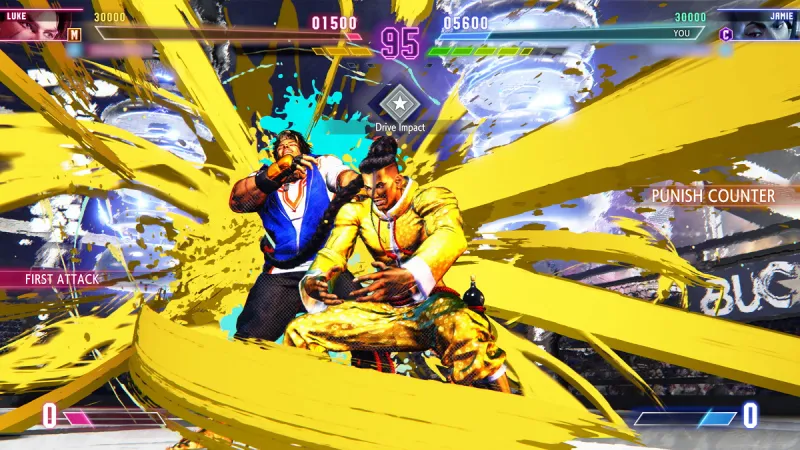
One of the primary goals of Street Fighter 6 is to make the title something everyone, regardless of ability, can enjoy. While the Drive system is as approachable as new mechanics come in the series, Nakayama and his team came up with one way to ensure the most expansive collection of players could have fun with Street Fighter 6: different control types. The developers created three distinct control options, each catering to a different audience.
Classic controls give you the most traditional gameplay, while Modern controls remap and simplify gameplay. With Modern controls, throws, special moves, Drive Parry, and Drive Impact are mapped to single buttons and triggers, with buttons for kicks and punches replaced with single buttons for agnostic light, medium, and heavy attacks.
The point of Modern controls wasn’t to deliver an “easy mode” but rather to give those less familiar with fighting games another option to jump into the fun while still requiring skill. “We have to consider that this series has been going on for 35 years now, and someone who’s been playing the games for 35 years might know a little more than someone who’s never touched a Street Fighter game,” Nakayama says.
Modern controls work across all game modes, which raises concerns about competitive integrity. After all, how would two equally matched players stack up if one uses a simplified control scheme? Currently, the team is exploring options like making Modern control specials weaker, so players are encouraged to use the inputs, or making it so it doesn’t allow you to select between low, medium, or high of the special move. But since Classic controls already offer more precision in selecting your attacks, the team isn’t overly concerned about competitive imbalance.
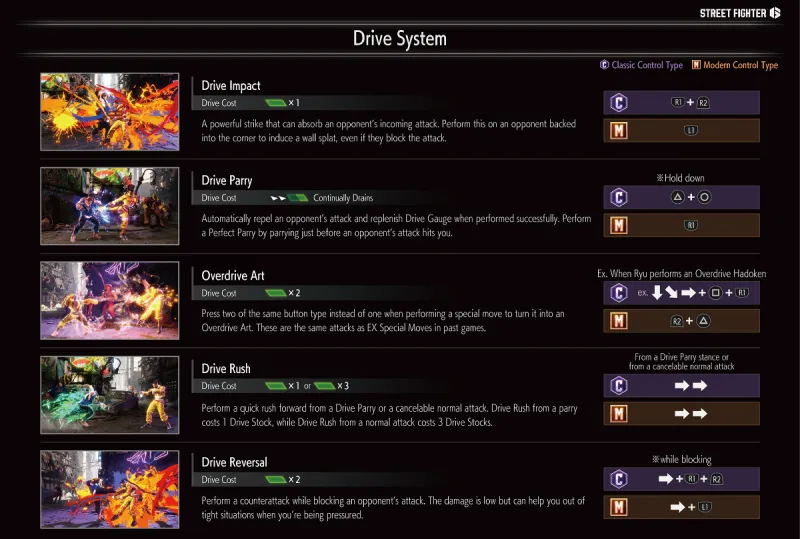
Though Modern controls may sound like training wheels in some ways, Nakayama says there will never be any pressure from the game for players to “graduate” to Classic controls. In fact, Nakayama imagines high-level players could excel in a competitive setting using Modern controls. “We feel that if a player is comfortable with Modern Controls and they’re happy with that, then that’s totally fine,” he says. “It’s not like the game is going to encourage you to go into playing Classic because that’s ‘better.’ The goal is to give different options to different players, regardless of skill type. It’s going to be based on what they feel comfortable playing.”
In contrast to Classic and Modern controls, which are balanced against each other and meant to be competitive, Capcom also gave me a sneak peek at a third control option: Dynamic controls. This mode is meant to be closer to what players could consider an “easy” mode, as the game essentially decides which attack to perform on your behalf as you press face buttons. Strategy still plays a role, and you still manually perform parries and move the character using the d-pad, but this mode caters to the world's button mashers.
“In a normal fighting game, when they [mash buttons], they just do a lot of whiffs,” Nakayama says. “We wanted something important and something that makes a difference happen by randomly pressing buttons.”
If a character is far away, pressing the face button might throw a projectile, while that same button might pull off a combo in an up-close encounter. The name “Dynamic” refers to the fact that the game will perform different contextual actions based on the location and situation of the match when the buttons are pressed. Unlike Classic and Modern controls, which can be used in any mode, Dynamic is unavailable in online fights.
With these three control schemes in tow, Street Fighter 6 feels like the most approachable entry in the franchise. But maybe the most recognizable part of the series is not in its gameplay but in its cast of characters. Thankfully, the philosophies applied to the game’s core mechanics – the classic inspiration, the fresh approach, and the widely appealing styles – all carry over into the art and characters of Street Fighter 6.
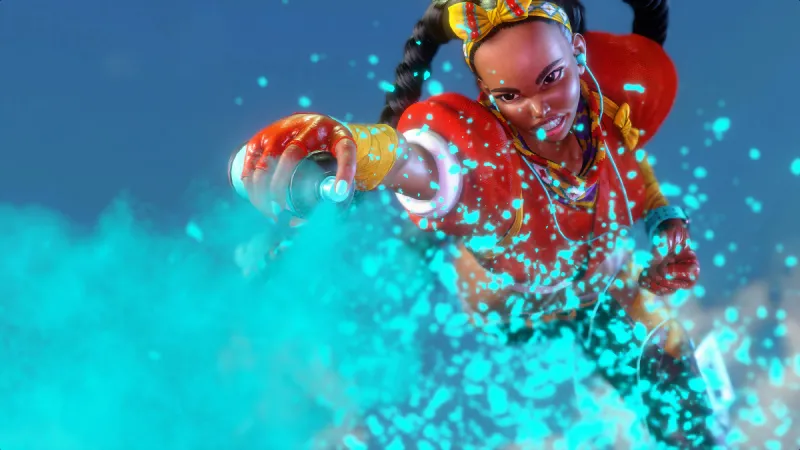
As Capcom looked at the roster of characters it wanted to include in Street Fighter 6, it pulled from a selection of classic fighters and new faces. Debuting characters like Luke, Jamie, and Kimberly, offer unique personalities and fighting styles we haven’t seen in past games. Meanwhile, Street Fighter II icons Ryu, Guile, Chun-Li, Dhalsim, and Blanka are all slated to return, each sporting a new look to reflect their older stature during this latest point in the Street Fighter timeline.
Maybe the most significant departure from his classic style is Ken, who serves as a central character (though not the protagonist) in Street Fighter 6’s story. As one of the two original playable characters in the series, alongside Ryu, fans have seen his complete evolution from Ryu’s rival to husband of Eliza, father of Mel, and ex-vice president of the Masters Foundation. Street Fighter 6 ushers in a new chapter for the iconic combatant.
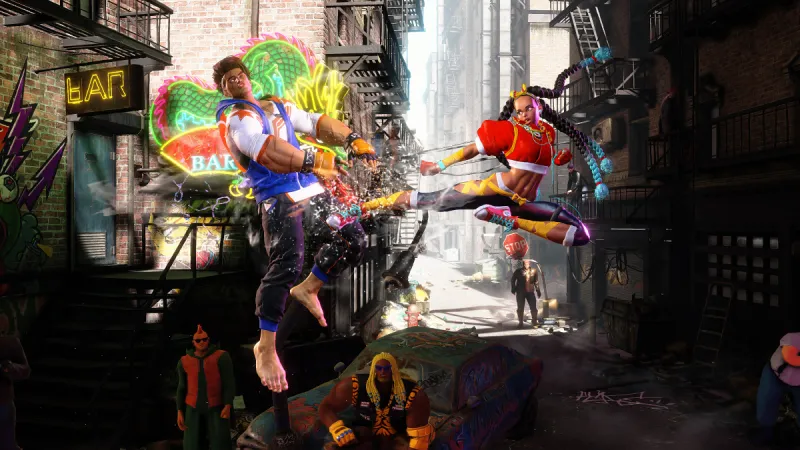
“Throughout the series, it seems like his life has become more and more stable, and the team felt like he was losing a reason to fight,” Nakayama says. “But this is a way to create that reason for him to step up. We want to create that kind of plotline that explains why Ken is important and gives him more purpose. The story will be tied to those other characters close to him.”
While Capcom is tight-lipped about why Ken is in these extraordinary circumstances, we know he’s on the run from something. In early scenes from his Arcade mode story, we see him apprehended and interrogated about a terrorist bombing. Ken’s backstory will be fleshed out through a special four-issue comic series with longtime Capcom collaborator UDON Entertainment.
“This is the first time that we’re doing this kind of comic book series that’s closely tied to the story of the main game,” Nakayama says. “We’re working very closely with our partners at UDON. We’re providing the script and the storyline of what to expect before the events of Street Fighter 6. They’re going to be helping us to create the storylines. Beyond that, they’re even looking into possible spin-offs and collaborating with the scriptwriters on the team, so there may be more stuff beyond just the initial comic book series.”
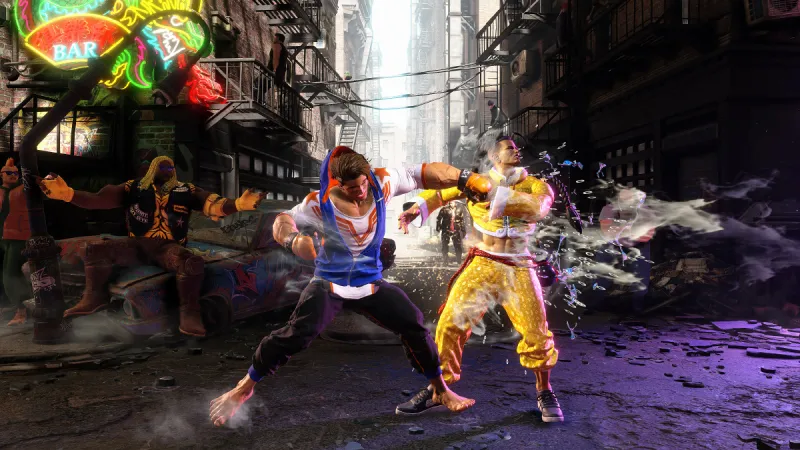
The main protagonist of Street Fighter 6, Luke, also plays a major role in the prequel comic series. Luke is the first instructor to the avatar character you create in World Tour, the story-based action mode, giving him a prominent place in the story.
Speaking of your avatar, Street Fighter 6 offers robust customization options for you to create your character in World Tour. Throughout this mode, you travel the world, interacting with, fighting, and learning from the iconic Street Fighter cast, starting with Metro City.
World Tour offers a unique experience that lets you explore an open area as your custom avatar. Here, you experience the story while also learning the ropes of Street Fighter 6. Nakayama teases that while learning the techniques of your favorite fighters is rewarding, the extra lore drops will also appease longtime fans.
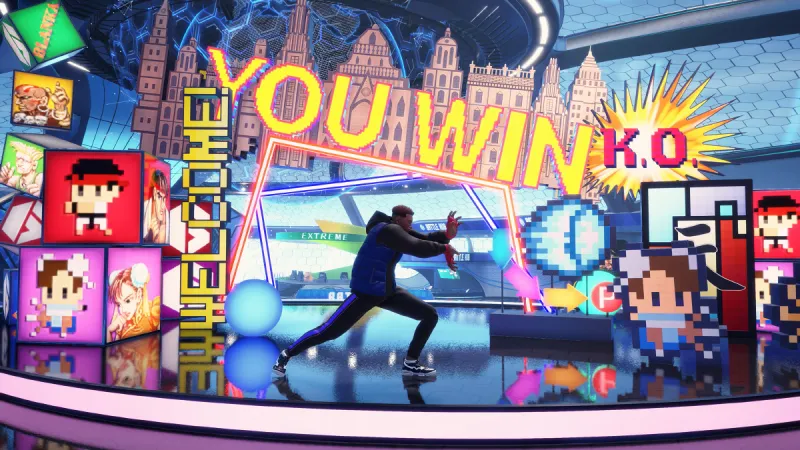
World Tour is the primary vehicle for players to experience the story, but it’s not the only way, as players can dive into Arcade mode to further experience the story focused on their chosen fighter. Meanwhile, Fighting Ground offers straightforward fights as well as Training and Extreme Battles, where fighters must compete with obstacles like a bull running through the stage or objects players can attack to ricochet into their opponents.
Maybe the most substantial new mode for longtime players is Battle Hub, a big, open area modeled after an arena, where players can be social with others online using their avatars. Drawing heavy inspiration from the esports and arcade scenes, Capcom wants to create an area that feels like a good place for players to gather, play with each other, and learn new information about the game.
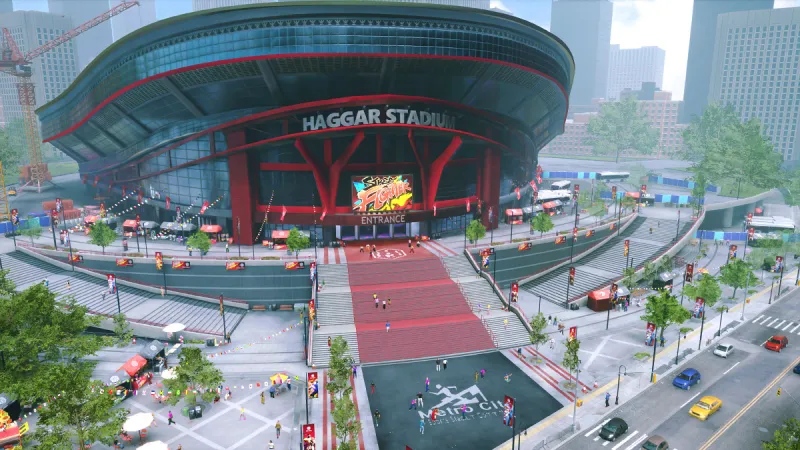
The biggest inspiration for Battle Hub was born from the team’s desire to be social when it was largely inadvisable to do so in real life. “Especially with COVID, there’s not many opportunities to go to arcades and socialize with your friends,” Matsumoto says. “So, we felt like, ‘What if we made an online version of an arcade? Are we able to do that within Street Fighter?’ That was a challenge we wanted to take on and recreate because we grew up in the era of going to arcades with our friends, and that’s something we have fond memories of.”
If you want to take a break from Street Fighter 6, you can even compete with other players for high scores on classic games like Final Fight and Street Fighter II in the Game Center of the Battle Hub. Players can also spectate any match in the hub, a longtime and vital component of the fighting game genre over the years.
Battle Hub plays into a sentiment that permeated nearly every part of my conversations with the development team: Capcom understands people love watching Street Fighter. That’s why it created a specific color language in its Drive System to let players know what is happening. For example, Drive Parry has a blue color scheme, Drive Rush has a green aura, and Drive Impact splashes the screen with character-specific colors. “We want to make it easier to tell from a player perspective, but beyond that, even if you’re not playing and you’re just kind of watching, we wanted to emphasize those points for viewers, so they know what’s happening based on what they see in the game color-wise,” art director Kaname Fujioka says.
Not only that, but the developer implemented a new way for spectators to remain clued into the action happening on screen: Real-time Commentary. This new addition allows players to create their dream commentary team from established esports and entertainment voices. By selecting (or deselecting) two in-game commentators, players get a similar experience as they might when watching a streamed fighting game tournament. The commentary adds some esports flavor to the fights and helps educate the players and spectators.
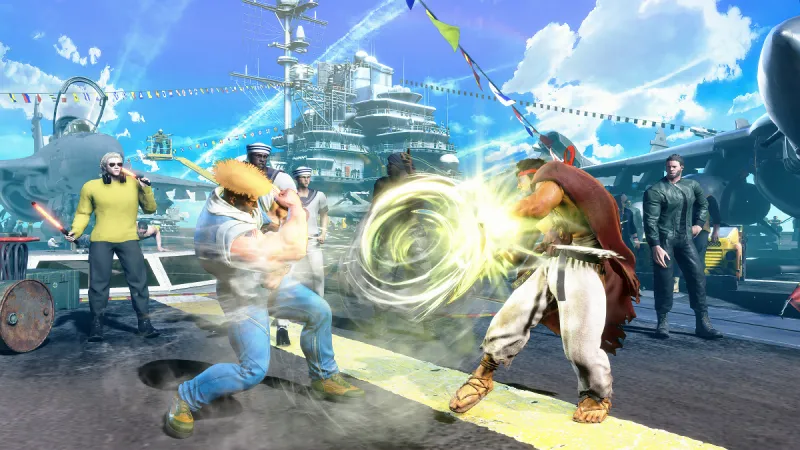
“What the developers smartly did was pepper in educational lines,” esports color commentator and Street Fighter 6 in-game analyst James Chen says. “The lines are mostly spoken by the main commentators like Vicious and Tasty Steve and Aru, while my part is largely just color commentary. But it's a nice, subtle way of teaching beginner players higher level concepts, like making sure they anti-air opponents who jump at them and such.”
The commentary reacts in real-time to the action on screen, even escalating in intensity as the rounds progress. Capcom worked closely with Japanese commentator Aru to figure out the system behind it and figure out how to correctly incorporate the idea. While the obvious analog for this concept is sports games, Nakayama and his team drew more inspiration from esports events and thinking about how less-skilled players would enjoy having their matches called by their favorite commentators. The result feels potentially revolutionary, giving more insight into the on-screen action than ever. Esports are relatively young in the grand scheme of things, but Street Fighter 6 uses this convention to such a significant effect that it’s almost shocking the genre has never done it to this extent.
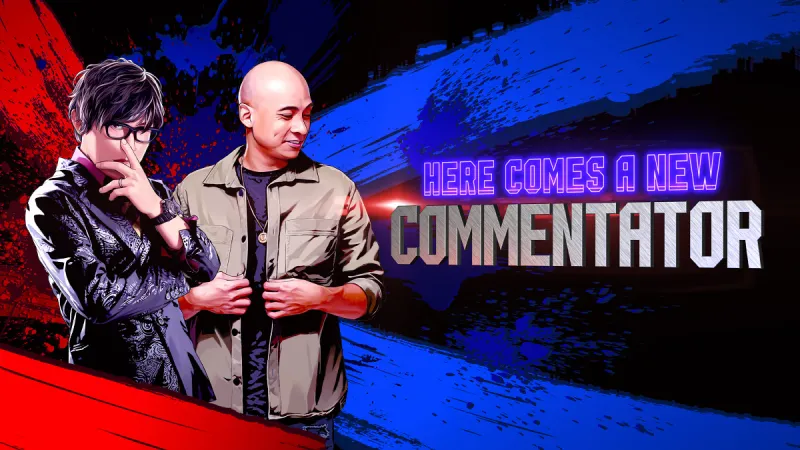
There's a saying in MMA, adapted from a famous Nelson Mandela quote: You either win or you learn. Street Fighter V may not have been the win Capcom was looking for when it initially launched, but by listening to fans, extracting the right lessons, and course-correcting, the developer appears ready to deliver the next truly great entry in its legendary fighting game franchise.
Of course, with how much Street Fighter V improved, thanks to the post-release title and content updates, Capcom will continue to iterate on Street Fighter 6 for years after its June 2023 launch. The main difference this time is Street Fighter 6 feels like it is already in a much better position than V was in the ramp-up to its release.
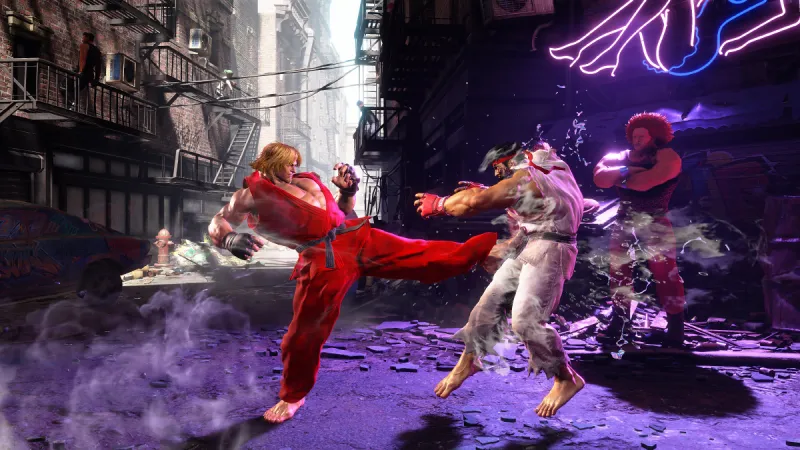
“This time around, we’re preparing more staff members on the development team, compared to the people who worked on the post-launch content for Street Fighter V, to prepare content for 6,” Tsuchiya says. “I can’t talk about the specifics of the post-launch content; it’s safe to say we are aiming to deliver updates in the future, sometime after the release of Street Fighter 6 to deliver more content, whether it be characters or stages and whatnot.”
With the likelihood of starting in a much better position than its now-well-liked predecessor and the potential benefit of post-launch evolution, the sky is the limit for Street Fighter 6. We won’t know how Street Fighter 6 will turn out until next year when the game launches, but for now, the franchise’s future looks as bright as its past.
This article originally appeared in Issue 351 of Game Informer. To learn more about the road from Street Fighter I to Street Fighter 6, be sure to read our in-depth history on the franchise from that same issue.

Explore your favorite games in premium print format, delivered to your door.